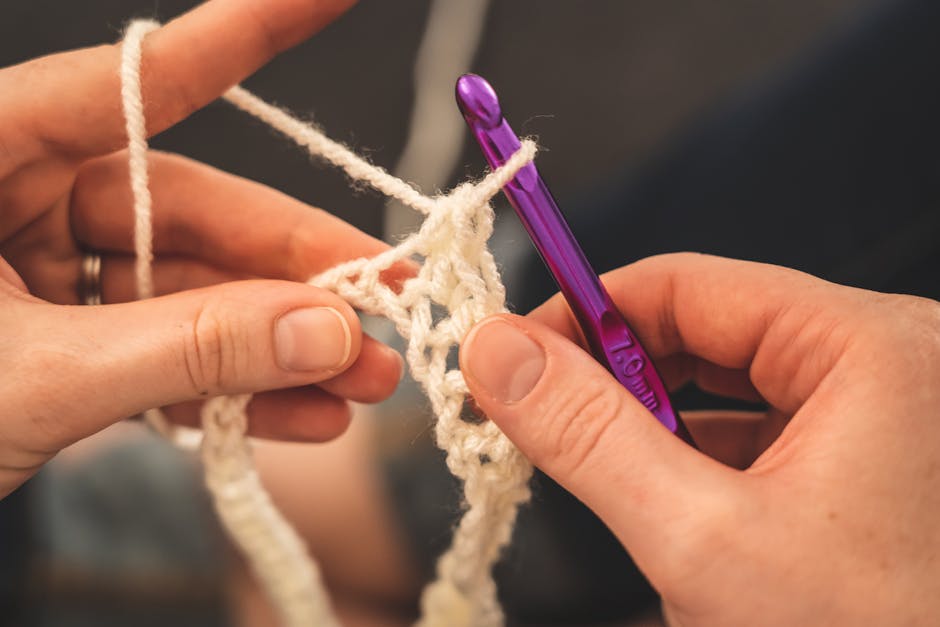Iterating on Your MVP for Better Results
You’ve poured your heart and soul into building your MVP, but the harsh reality is that it’s probably not perfect, and that’s okay – in fact, it’s expected. Now it’s time to refine it. Gather feedback from early adopters, identify pain points, and prioritise changes and fixes. Make data-driven design decisions, and cut loose features that don’t meet user needs. Create a community of beta testers to put your revamped product through its paces. And, of course, track metrics that matter. You’ve got a lot of work to do, but with the right approach, you can turn your decent MVP into a game-changing product.
Key Takeaways
• Establish feedback loops to collect user insights, identifying areas of improvement and refining the MVP accordingly.• Prioritise changes based on user impact, using root cause analysis and user frustration mapping to tackle pain points effectively.• Aline design principles with user needs, making data-driven decisions that resonate with the target audience and avoid personal biases.• Iterate with beta testers, offering incentives and fostering a sense of ownership to gather valuable feedback and track concrete iteration metrics.• Be ruthless in evaluating iteration success, cutting losses when necessary, and focussing on metrics that truly matter to achieve better results.
Gathering Feedback From Early Adopters

As you finally get your MVP in the hands of early adopters, it’s time to stop celebrating and start listening to what they’ve to say about it.
You’ve worked tirelessly to create something you think is amazing, but let’s be real, your users might’ve a different opinion. And honestly, their opinions are the only ones that matter.
You created user personas to guide your development, but now it’s time to see if your assumptions were correct.
Are your early adopters who you thought they’d be? Do they use your product in ways you expected? The only way to know is to ask them.
Establish feedback loops to collect their thoughts, concerns, and suggestions. This isn’t about being right or wrong; it’s about making your product better.
Don’t be afraid to ask the tough questions.
What do they like? What do they hate? What’s confusing? What’s missing? You might be surprised by what you learn.
Your early adopters will appreciate your willingness to listen, and you’ll gain valuable insights to inform your next steps.
Remember, your MVP is just the starting point. It’s time to iterate, refine, and make it better.
Identifying Pain Points and Areas

Now it’s time to get real about what’s not working.
You’ve gathered feedback from your early adopters, and it’s time to identify the pain points that are making your users want to pull their hair out.
Pain Point Analysis
You’re probably wasting time and resources on features nobody cares about, so let’s identify the pain points that’ll make your customers’ lives easier and your product more relevant.
Face it, you’re not a mind reader, and guessing what your customers want is a recipe for disaster. To get it right, you need to get real about what’s causing them pain.
That’s where pain point analysis comes in. This isn’t about asking customers what they want; it’s about understanding their struggles and frustrations. You need to dig deep to find the root cause of their problems.
Pain profiling is key here. By creating profiles of your customers’ pain points, you’ll start to see patterns and areas where your product can make a real difference.
It’s not about solving every problem, but about tackling the ones that’ll have the greatest impact. So, stop guessing and start analysing.
Your customers (and your bottom line) will thank you.
Key Area Assessment
Now that you’ve stopped guessing and started analysing, it’s time to pinpoint the key areas where your customers are struggling the most.
This is where the magic happens – or rather, where you get to fix the not-so-magical parts of your MVP. Key area assessment is all about identifying the pain points and areas that need improvement. It’s time to get real about what’s not working and where you need to focus your energy.
Conduct a thorough risk evaluation to identify potential pitfalls and prioritise your efforts accordingly.
This isn’t the time to be sentimental about your pet features or assumptions. Be ruthless – what’s not working, and what can you do about it? Next, perform a stakeholder analysis to understand who’s impacted by these pain points and how.
This will help you prioritise your efforts and allocate resources effectively. Remember, this is an iterative process, and it’s okay to pivot or adjust course. The goal is to create an MVP that truly solves real problems, not just looks good on paper.
Prioritising Changes and Fixes

You’ve got a laundry list of issues to tackle, but you can’t fix everything at once.
It’s time to get real about what’s worth your time and energy, and what can wait.
Now, you need to identify the key issues, assess the impact of each change, and set realistic timelines – because let’s face it, you’re not a superhero (no matter how much coffee you drink).
Identify Key Issues
Pain points in your MVP are like weeds in a garden – they’ll choke the life out of your product if left unchecked. You can’t just slap a Band-Aid on a broken feature and call it a day. You need to get to the root of the problem. That’s where root cause analysis comes in. It’s not about treating the symptoms; it’s about identifying the underlying issues that are causing user frustration.
User frustration mapping is a great tool to visualise the pain points in your MVP. It helps you identify the areas where users are getting stuck or dropping off.
By mapping out these frustration points, you can prioritise your fixes and changes. It’s not about making sweeping changes; it’s about making targeted fixes that address the root causes of user frustration.
Don’t waste your time and resources on Band-Aid solutions. Take the time to dig deep, identify the key issues, and tackle them head-on. Your users (and your product) will thank you.
Assess Change Impact
With your user frustration map in hand, it’s time to get tactical about tackling those pesky pain points, and that means prioritising your changes and fixes based on their potential impact.
You can’t tackle everything at once, so you need to get strategic about which changes to make first. That’s where risk analysis comes in. It’s time to weigh the potential benefits of each fix against the potential risks and resources required.
You don’t want to sink a ton of time and money into a fix that mightn’t even move the needle.
Think of it as change management on a micro level. You’re not just making changes for the sake of making changes – you’re making intentional, data-driven decisions to improve your MVP.
So, take a hard look at each potential fix and ask yourself: what’s the potential upside? What’re the potential downsides? What resources will it require?
Set Realistic Timelines
Now that you’ve got your prioritised list of changes and fixes, it’s time to get realistic about how long each one will take, and be honest, some of these fixes are gonna take a lot longer than you think. You know the drill – you estimate a task will take a day, and suddenly it’s three days later and you’re still stuck on the same problem. Don’t kid yourself, it’s time to get realistic.
To avoid this, try timeboxing strategies. Break down each task into smaller chunks, and allocate a specific time frame for each one. This will help you stay focussed and avoid procrastination. Here’s an example of how you can plan your project milestones:
| Task | Estimated Time | Deadline |
|---|---|---|
| Fix UI bug | 2 hours | 2 days |
| Implement new feature | 8 hours | 5 days |
| Optimise database | 4 hours | 3 days |
| Refactor code | 6 hours | 4 days |
Making Data-Driven Design Decisions

You’ve probably spent hours agonising over every pixel and colour palette choice, but if you’re not using data to drive those design decisions, you’re just winging it. Newsflash: your personal taste doesn’t matter. What matters is what your users want and need.
So, how do you make design decisions that actually resonate with your audience?
It starts with establishing clear design principles that aline with your product’s goals. These principles should be rooted in data, not personal opinions or biases.
Refining Your Product’s Core Features

Get ready to kill your darlings – those flashy features you’re attached to might be suffocating your product’s true potential. You know, the ones that sounded great in theory but haven’t quite lived up to the hype.
It’s time to take a hard look at your product’s feature set and prioritise what truly matters.
Feature prioritisation is key to refining your product’s core functionality. You can’t be everything to everyone, and trying to do so will only lead to mediocrity.
Identify the features that drive the most value for your users and focus on those. Cut the rest loose – no matter how much you luv them.
Be brutally honest with yourself: are there features that are just nice-to-haves?
Are there features that are duplicates or redundant? Are there features that are just plain confusing?
Cut them. You don’t need them. What you need is a lean, mean, core functionality machine that solves real problems for your users.
Building a Community of Beta Testers

With your newly refined feature set in hand, it’s time to find some guinea pigs – err, beta testers – to put your revamped product through its paces.
You can’t do it alone, and that’s where building a community of beta testers comes in. These brave souls will help you identify the kinks, bugs, and useability issues that’ll make or break your product’s success.
To attract and retain these valuable testers, you’ll need to offer some enticing Beta Tester Incentives. Think exclusive access to new features, priority customer support, or even a free premium subscription.
Make it worth their while, and they’ll be more likely to stick around and provide quality feedback.
Effective Community Engagement Strategies are also essential in building a loyal beta testing community.
Create a dedicated forum or social media group where testers can share their experiences, ask questions, and offer suggestions.
Respond promptly to their concerns, and show them that their input matters.
This will foster a sense of ownership and responsibility, encouraging them to take an active role in shaping your product.
Measuring Progress and Iteration Success

Your revamped MVP is only as good as the progress you can measure, so don’t waste time on vague ‘we’re making progress’ claims – track those metrics and prove it.
You need concrete iteration metrics to determine whether your changes are actually improving your product. Without them, you’re just flying blind.
What constitutes success for your MVP? Define those success benchmarks and track them obsessively. Are you trying to increase user engagement? Boost conversion rates? Improve customer satisfaction?
Whatever your goals, establish clear targets and regularly assess your progress. Don’t get too caught up in vanity metrics – focus on the numbers that truly matter.
When evaluating iteration success, be ruthless. If a feature or change isn’t delivering the desired results, cut your losses and move on.
Don’t fall in luv with your own ideas; fall in luv with the data. Remember, your MVP is a work in progress, and iteration is an ongoing process.
Conclusion
You’ve survived the baptism by fire of launching your MVP.
Now, it’s time to refine the beast. By iterating on your product, you’re not just slapping on Band-Aids – you’re performing surgical strikes on flaws, tweaking the engine for a smoother ride.
Your early adopters are the canary in the coal mine, and their feedback is the map to hidden treasure.
Follow it, and you’ll uncover the secret to a product that’s pure gold.
Contact us to discuss our services now!
